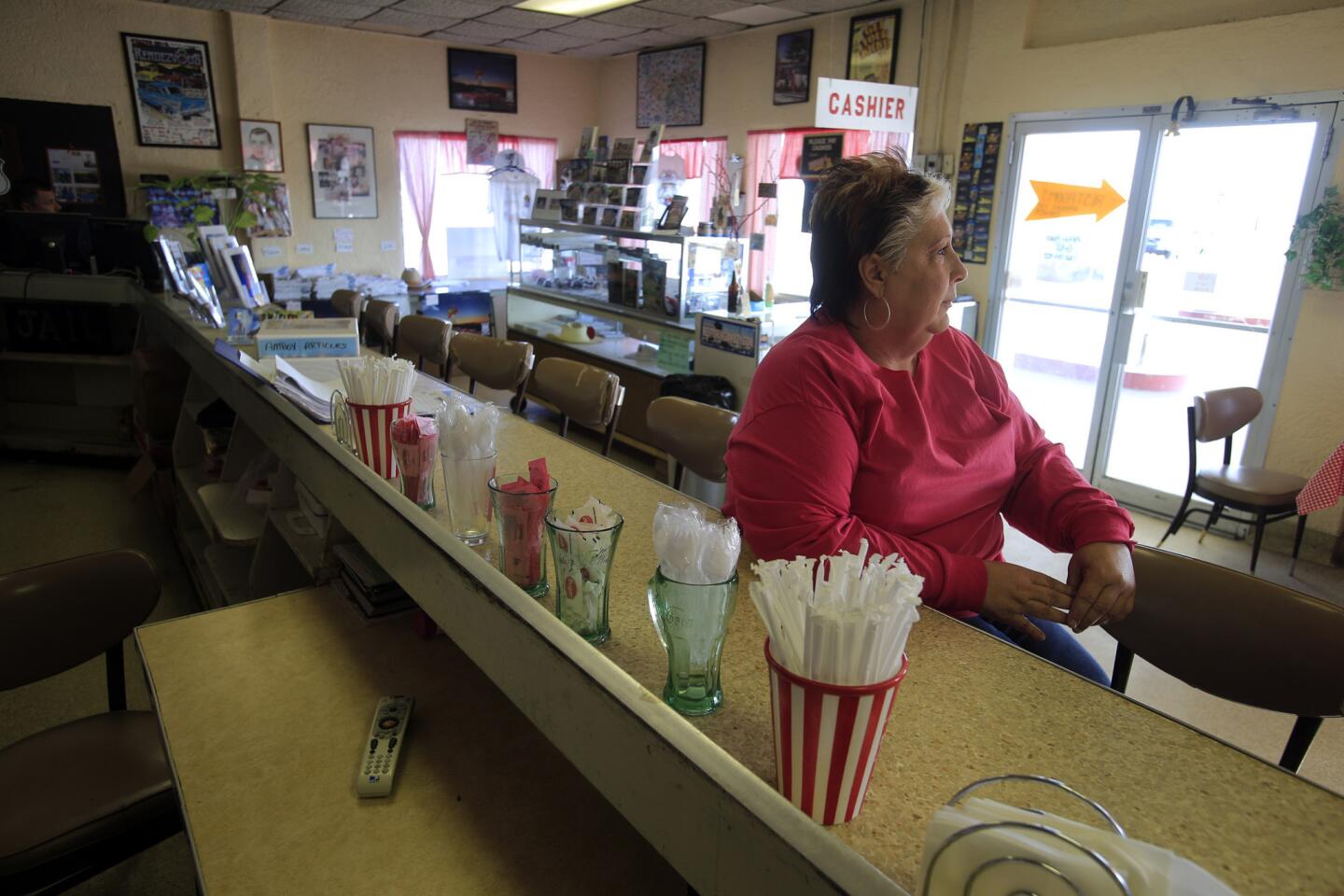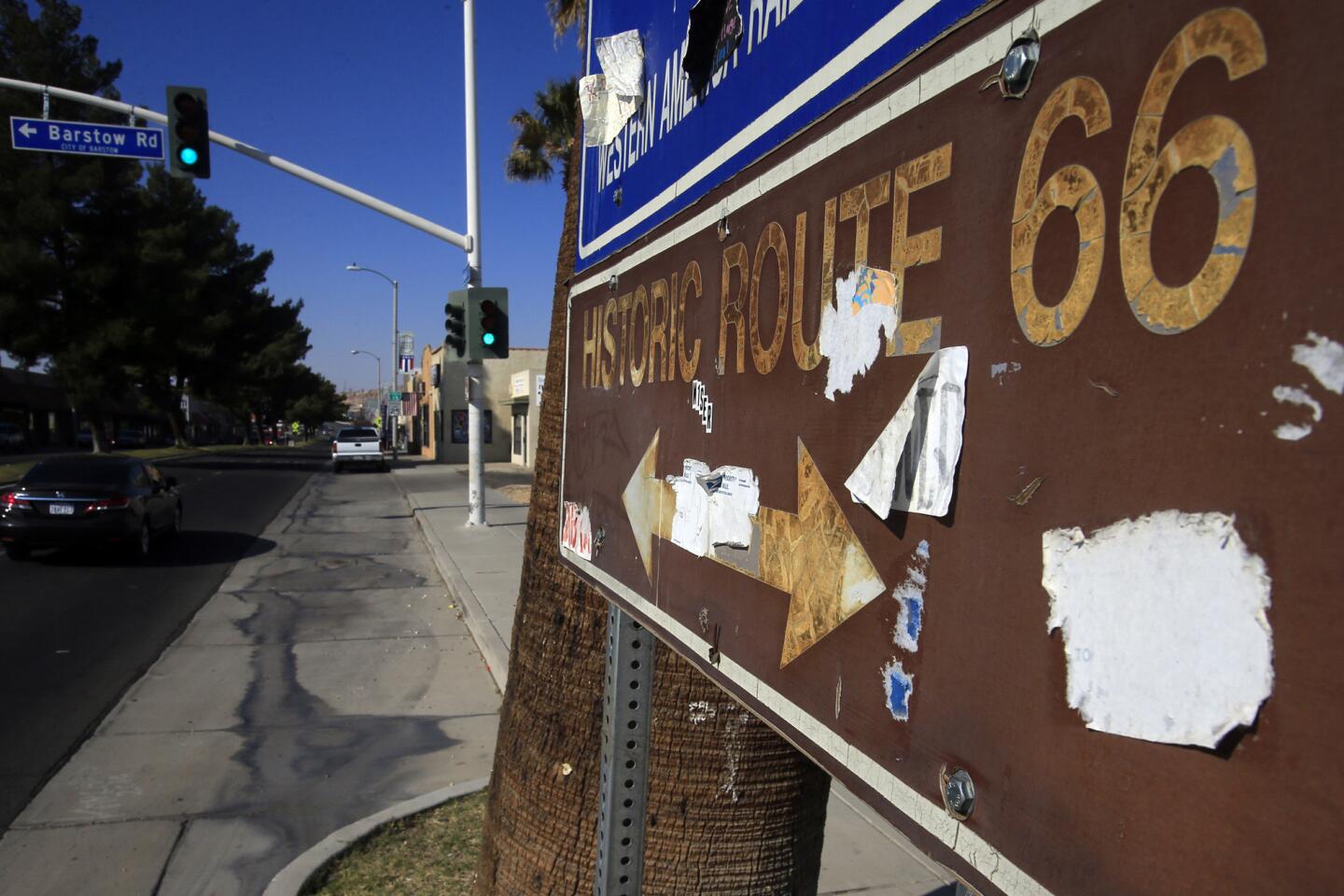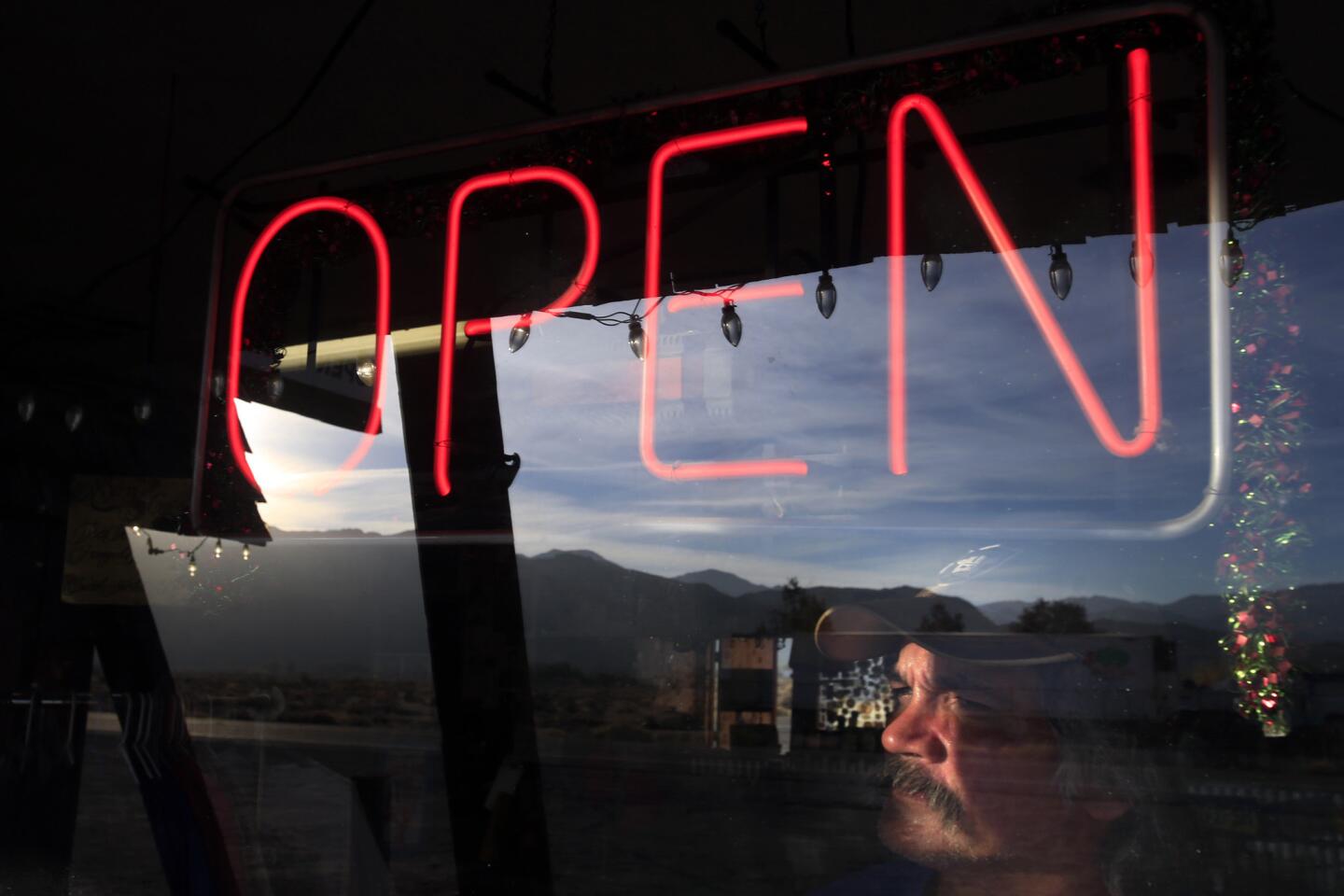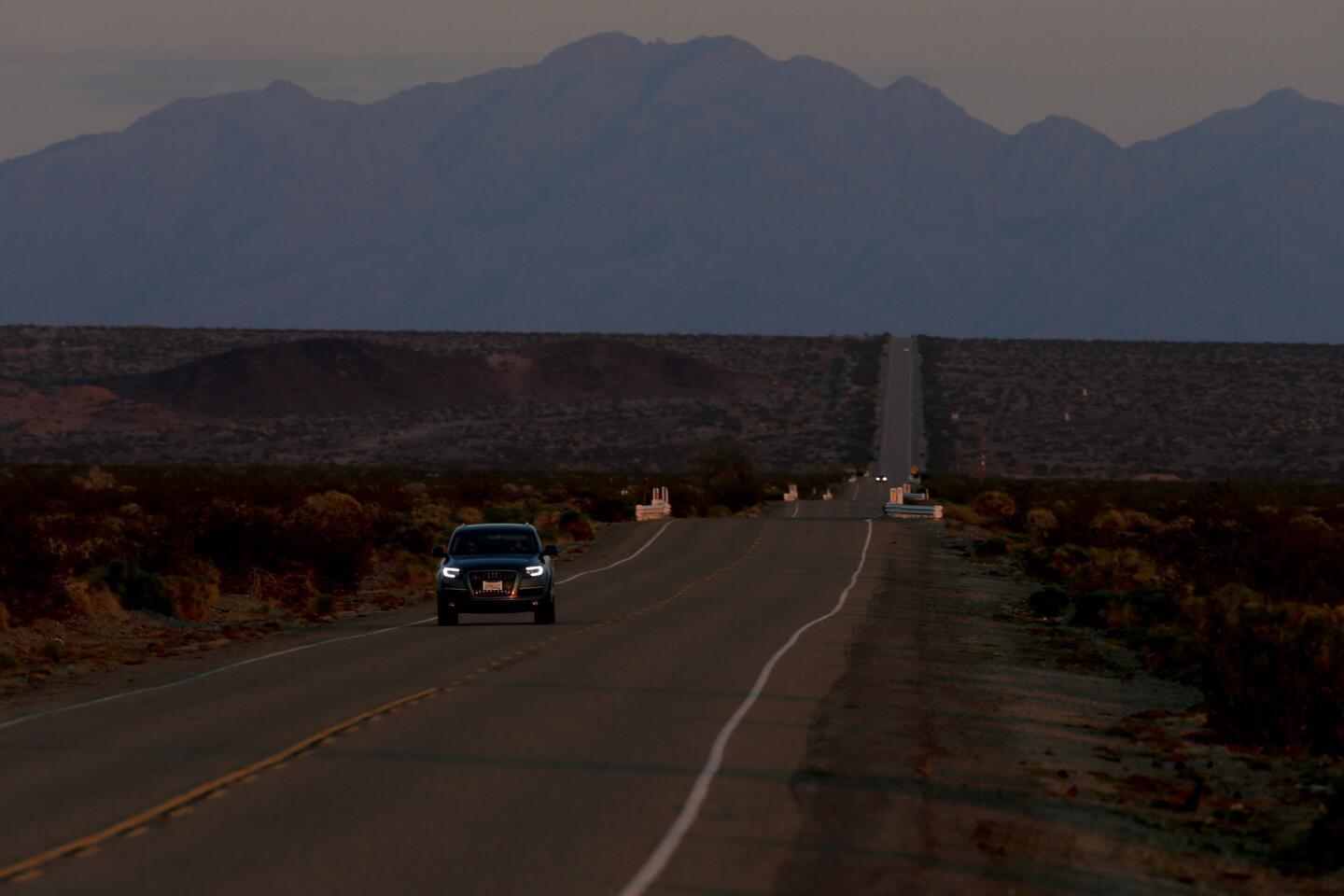Great Read: Motel operator is driven to keep Route 66 culture alive and kicking
- Share via
Kumar Patel grew up along Route 66, a highway long celebrated in literature, song and film. He was not impressed.
On his first long road trip, about six years ago, he found himself bored by the route’s decaying monuments, mom-and-pop diners and dusty museums.
“I hated it,” he said. “But I didn’t understand it.”
The journey to understanding started soon after that trip, when his mother started having health problems. She had been running the family’s Wigwam Motel, a clutch of 20 tepee-shaped rooms on Route 66 in San Bernardino. She could no longer run it alone.
So at 26, Patel took over, giving up a career in accounting to run an aging tourist trap that struggled to cover its costs.
Now, as a 32-year-old entrepreneur, he stands out among the typical Route 66 merchants, who promote such roadside curiosities as a Paul Bunyon monument, a blue whale statue and the Petrified Forest National Park. Such sites now are operated and visited mostly by white, middle-aged travelers, whose numbers are dwindling.
Unless Patel and other Route 66 business owners can attract a younger and more diverse crowd, one that matches the evolving demographics of America, the shops and oddball attractions along the route will shut down for good.
“If it doesn’t happen, we are not going to keep all of this alive,” said Kevin Hansel, the caretaker of another struggling Route 66 business, Roy’s Motel and Cafe in Amboy. “It will be history.”
That history started in the 1920s, when the road was built to handle a surge in automobile ownership and a push by business owners to link the small towns and merchants of the Midwest to big cities. Route 66 became the nation’s main east-west artery.
In his novel “The Grapes of Wrath,” John Steinbeck called it the “mother road” because it beckoned and delivered the refugees from the Dust Bowl exodus to jobs in California in the 1930s. Bobby Troup penned his biggest hit song, “(Get Your Kicks on) Route 66,” in 1946.
But by the 1950s, the narrow, slow-moving route was replaced in pieces by multilane, interstate freeways, designed for high-speed travel. Federal workers removed the freeway markers and decommissioned Route 66 in 1985, effectively killing business for the jukebox-blasting diners and neon-rimmed motels.
Today, with the future of the Wigwam at stake, Patel has immersed himself in that history, driving Route 66 himself, stopping to chat with his fellow shopkeepers and travelers. He set out on a search for insight into how to promote his business but ended up with a more personal appreciation of the route’s culture.
“That’s what grew on me: The people who shared with me their stories of the road,” he said.
::
When the Wigwam Motel went on sale in 2003 for nearly $1 million, Patel’s father, an Indian immigrant who ran another small hotel in San Bernardino, saw it as a good investment. It has yet to pay off.
Like many Route 66 businesses, the Wigwam struggles to squeeze out enough money to pay for improvements. It took five years to save up to renovate the pool area. Last year, Patel was finally able to afford a full-time maid for the motel. Before then, Patel and his mother cleaned and changed sheets while selling souvenirs and booking rooms.
“We still run it on a thin line,” he said.
With the Wigwam’s success tied to Route 66, Patel has become a tireless promoter of its culture. He sees that as a way to keep the history of Route 66 alive and fill his motel rooms.
He set out recently on a drive to show off some of its peculiar attractions along California’s stretch of the 2,400-mile highway that runs from Chicago to Santa Monica. He started from a rundown roadside hotel in Needles, in the Mojave Desert near the Arizona border.
Stars twinkled in the darkness. The only sound was the hum of big rigs bouncing off the blacktop. The best way to experience the road, he said, is by driving east to west. It’s the way the Dust Bowl refugees saw it and later Midwesterners, heading for vacations in Los Angeles.
“On Route 66 you find real people, real food,” Patel said.
He rattled off history and trivia as the car zipped past telephone poles on National Trails Highway — the name now given to the portion of Route 66 that runs through much of the Mojave Desert.
A downed palo verde tree about half a mile outside of Amboy is called the “Shoe Tree” because it toppled under the weight of hundreds of shoes tossed on the branches by visitors. It’s a tradition that locals say was started by an arguing couple and continues today.
“The purists love this stuff because they don’t want to see things that are renewed,” Patel said. “They want to see the original stuff.”
Take tiny Amboy (population 17), once a bustling pit stop. Today, the only commerce happens at Roy’s Motel and Cafe. The cafe sells only soft drinks and snacks. The motel is closed because of a lack of water. The drop-off in business no longer makes it practical to ship in water by train. The ground has long been saturated with salt, making well water undrinkable.
Kevin Hansel, the caretaker, dreams of the day someone drills a well deep enough to reach drinkable water.
“Once we get the water, we can open the restaurant and the bungalows,” he said.
As Patel visited, about a dozen Volkswagen vans pulled in under the cafe’s giant boomerang-shaped sign. The VW road warriors were meeting at Roy’s before driving east to Lake Havasu.
Among them was retired welder Joe Stack, 71, of Costa Mesa. He has been taking this road trip for 10 years. When Stack’s daughter was a girl, she rode shotgun in his van.
But she is now 22 and not interested in the retro architecture of Route 66.
“Young kids don’t want to come out here,” he said, squinting in the morning sun. “Young kids are on a computer wearing their thumbs out.”
::
Route 66 travelers today have a median age of 55 and 97% are white, according to a 2011 study by David Listokin, a Rutgers University economics professor. Only 11% of the travelers on the road are ages 20 to 39, according to the study.
A few months ago, Listokin read the highlights of his study to a group of Route 66 business owners who met at the Disneyland Hotel in Anaheim to discuss the road’s future. Patel was there — among the few people in the room under age 40.
Patel stood at the front of the brightly colored Magic Kingdom Ballroom, urging his fellow Route 66 merchants to reach out to young travelers, the way he has done.
He hosted hip-hop, end-of-summer festivals at the Wigwam Motel, with DJs and strobe lights. During a recent Christmas, he threw a doughnut party and decorated the tepee-shaped motel rooms to look like Christmas trees. He’s volunteered his motel as a stop for a classic car show to raise money to restore a historic gas station in Rancho Cucamonga.
His work has won him the respect of older Route 66 advocates.
“We absolutely need that kind of thing that he is doing,” said Linda Fitzpatrick, 73, who is leading a campaign to restore the Needles Theater, a 1930s-era Masonic temple that was converted to a movie house.
::
Back on the road, just outside Barstow, Patel pulled up to an attraction known as “Bottle Tree Ranch.”
The forest of metal trees, adorned with colored bottles, was built by Elmer Long, a 67-year-old retired cement worker who, with his long white beard and floppy hat, looks like a ‘49er-era gold prospector.
During the busy summer months, he said, his bottle trees draw as many as 1,000 visitors a day. But most of the visitors are international travelers. Each day, visitors leave Long a few dollars in a tip can.
“To them, the U.S. is a magical place,” he said, as traffic rushes past his ramshackle home.
The sky began to dim as Patel pulled up to the Wigwam Motel. His mother, who still helps Patel with the business, told him that two motel guests — young ones — were finishing a long road trip.
At the door of one of the tepees, Patel introduced himself to Emily Mills, 28, and her sister Anna, 25, from North Carolina. Emily Mills was starting a new job managing a Culver City restaurant. For the move west, the sisters decided on a Route 66 road trip.
They hit all the big stops, including the Cadillac Ranch, west of Amarillo, Texas, where junk Cadillacs have been thrust nose first into the earth. A few miles south of the ranch, the sisters stopped to see the statue of a giant pair of legs, more than 20 feet tall.
The Mills sisters also spent the night in another Wigwam Motel, in Holbrook, Ariz. — one of seven built across the country by architect Frank Redford. Only two Wigwams remain on Route 66.
“We wanted to tell our friends we slept in a wigwam and saw a giant pair of legs,” Emily Mills said as the sun set behind her tepee.
Guests like the Mills sisters are a good sign for the Wigwam, Patel said. Most Route 66 travelers zip through San Bernardino to reach the end of the route in Santa Monica, 78 miles away.
Patel can’t yet say when — or if — the Wigwam will ever become the moneymaker Patel’s father envisioned. But now he’s grown attached to the road, and sees himself as more than just a motel operator. Patel has become a curator of the Route 66 legend, a proud member of its cast of characters.
More to Read
Sign up for Essential California
The most important California stories and recommendations in your inbox every morning.
You may occasionally receive promotional content from the Los Angeles Times.
































